Ceramic capacitors are widely used in the world of electronics. Are Ceramic Capacitors Polarized? Understanding this aspect is crucial for proper circuit design and implementation.
What Are Ceramic Capacitors?

Ceramic capacitors are passive electronic components that play a vital role in electronic circuits. They are made of a ceramic material that acts as a dielectric and is sandwiched between two conductive plates.
These capacitors are known for their small size and high capacitance values relative to their physical size. They can handle a wide range of frequencies, making them suitable for high-frequency applications such as radio frequency (RF) circuits and digital circuits. Ceramic capacitors also have good stability and temperature characteristics, meaning that their performance does not change much due to temperature changes.
They are often used for coupling, decoupling, filtering, and bypassing in electronic circuits. For example, in power supply circuits, they can help smooth the voltage and eliminate any unwanted electrical noise, ensuring a stable, clean power supply to other components.
Are Ceramic Capacitors Polarized?

Most of the ceramic capacitors we often encounter in general electronic circuits are non-polarized. This basic characteristic stems from their unique construction and the properties of the ceramic material used as the dielectric medium.
In a typical non-polarized ceramic capacitor, the internal structure is designed symmetrically. The ceramic dielectric layer is evenly sandwiched between two conductive plates. This symmetry ensures that the electric field distribution within the capacitor remains consistent, regardless of the direction of the applied voltage. As a result, these capacitors can be seamlessly integrated into the circuit without worrying about the direction of the connection.
Non-polarized ceramic capacitors perform admirably in both alternating current (AC) and direct current (DC) applications. AC circuits are able to handle continuous changes in the direction of the voltage without any negative impact on their capacitance or other electrical properties. When used in DC circuits, they store and release charge as needed, maintaining their stability and functionality over time.
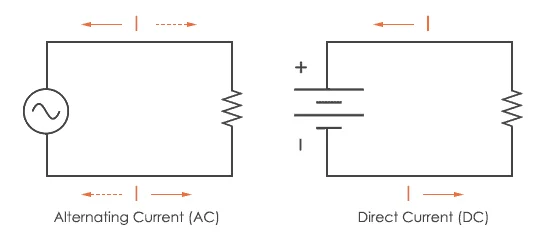
However, in the world of ceramic capacitors, there is a group of specialized types that are indeed polarized. These polarized ceramic capacitors are designed with specific uses in mind. They are usually designed to meet the requirements of some specific application where a specific electrical behavior under DC conditions is critical.
For these polarized ceramic capacitors, manufacturers usually provide clear markings to indicate the correct direction. These markings can take a variety of forms. One common method is to use a plus sign (+) to indicate the positive terminal.
In some cases, there may be other visual cues, such as a longer lead on the positive terminal or specific color coding on the body of the capacitor. These markings are critical as they guide the proper installation of the capacitor in the circuit. Incorrect connection of polarized ceramic capacitors can lead to a range of problems, including degraded performance, complete failure of the component, and potential damage to other associated circuit components.
Why Ceramic Capacitors Have No Polarity?
Ceramic capacitors are generally non-polarized, meaning they can be connected in any direction within a circuit without affecting their performance or causing damage. This key characteristic stems from their unique construction and the properties of the ceramic material used as the dielectric.
In a typical non-polarized ceramic capacitor, the internal structure is designed symmetrically. The ceramic dielectric layer, which acts as an insulator between the two conductive plates, is evenly sandwiched between them. This symmetrical arrangement ensures that the electric field distribution within the capacitor remains consistent regardless of the direction of the applied voltage.
In contrast, polarized capacitors, such as electrolytic capacitors, rely on a chemical reaction within the electrolyte to store charge. This chemical reaction has a specific directionality, making it essential to connect them with the correct polarity to prevent damage.
The non-polarized nature of ceramic capacitors offers several advantages:
- Versatility: They can be used in a wide range of applications, including AC circuits where the voltage polarity changes constantly.
- Ease of Use: No need to worry about polarity when connecting them, simplifying circuit design and assembly.
- Reduced Risk of Damage: Incorrect polarity can damage polarized capacitors, but this risk is eliminated with non-polarized ceramic capacitors.
This lack of polarity makes ceramic capacitors highly versatile and easy to use in a wide variety of electronic circuits.
What is the Polarity of Ceramic Capacitor?
Most ceramic capacitors are non-polarized. However, some special ceramic capacitors, like electrolytic ceramic capacitors, are polarized.
For polarized ceramic capacitors, there are usually markings. A plus (+) sign or a longer lead indicates the positive terminal. Their polarity is determined by the internal structure and materials. The dielectric and electrode design requires current to flow in a specific direction for optimal performance. Incorrect connection of polarized ceramic capacitors can lead to issues like leakage, overheating, or malfunction in the circuit.
Ceramic Capacitor Polarity Identification
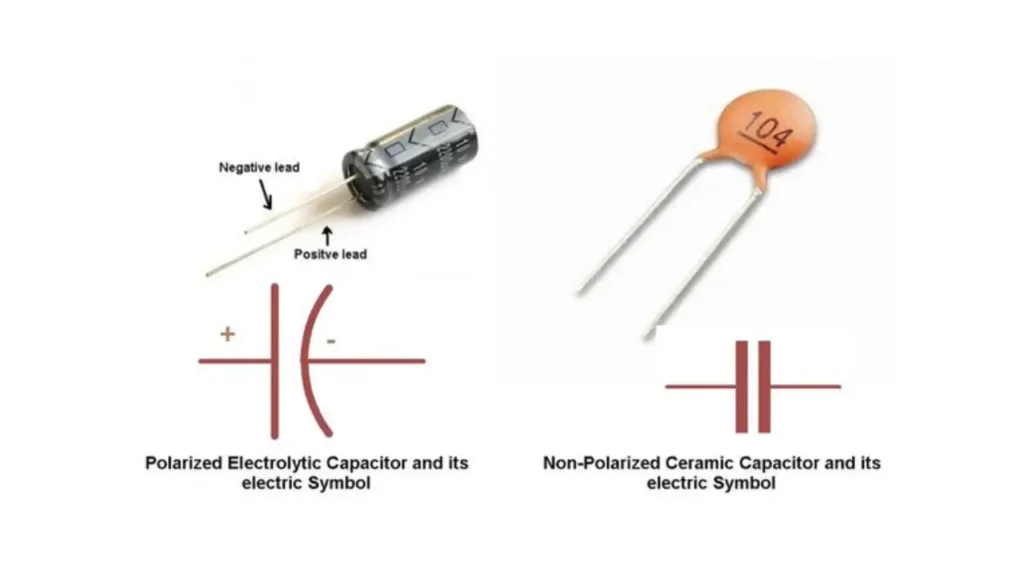
Ceramic capacitors are generally non-polarized, meaning they do not have a specific positive or negative terminal. Therefore, identifying polarity in ceramic capacitors is typically not necessary.
Polarity is a crucial concern for polarized capacitors, such as electrolytic capacitors, which have a defined positive and negative terminal. Connecting a polarized capacitor with incorrect polarity can lead to damage or even explosion.
However, some specialized types of ceramic capacitors, such as polarized ceramic capacitors, may have polarity markings. These markings usually consist of:
- Plus (+) and Minus (-) Signs: The positive terminal is typically marked with a “+” sign, and the negative terminal is marked with a “-” sign.
- Color Coding: Some polarized ceramic capacitors may use color bands or stripes to indicate polarity.
If you encounter a ceramic capacitor with polarity markings, it is crucial to pay attention to these markings and connect the capacitor accordingly. However, for the vast majority of standard ceramic capacitors, polarity identification is not necessary.
What is the Difference Between Electrolytic Capacitor and Ceramic Capacitor?
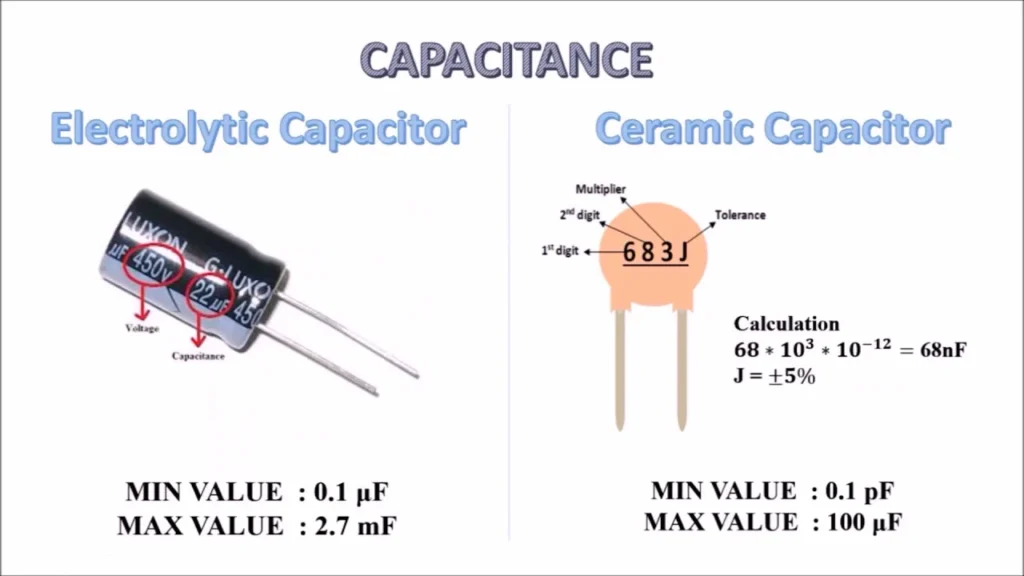
There are several differences between electrolytic and ceramic capacitors.
About Construction
Electrolytic capacitors use an electrolyte as the dielectric and typically come with foil electrodes. Ceramic capacitors use a ceramic material as the dielectric between two conductive plates.
Electrolytic capacitors typically have higher capacitance values, typically in the microfarad to thousands of microfarad range. Ceramic capacitors typically have lower capacitance values, typically in the picofarad to microfarad range.
About Polarity
Most electrolytic capacitors are polarized, with a positive and negative pole. They must be connected correctly in a circuit. In contrast, most ceramic capacitors are non-polarized and can be connected in either direction.
Electrolytic capacitors are better suited for applications that require large amounts of energy storage and filtering of low-frequency DC circuits. Ceramic capacitors are well suited for high-frequency applications, such as RF circuits, due to their stability and ability to handle rapid changes in voltage.
Why Does Capacitor Polarity Matter?
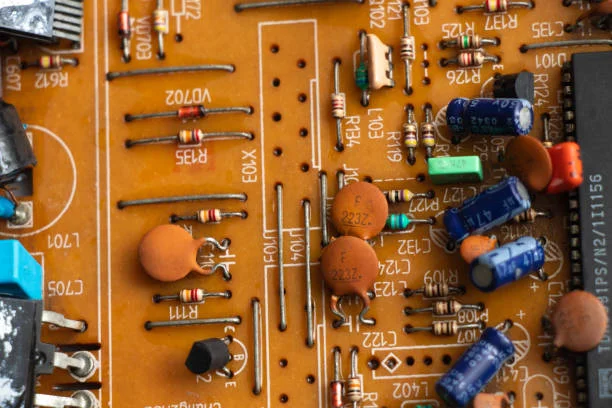
First, in polarized capacitors, the dielectric and electrode materials are designed to work best in a specific electric field direction. When properly connected, they can store and release charge efficiently. For example, in an electrolytic capacitor, the chemical reaction that gives it high capacitance relies on the correct flow of current.
Second, incorrect polarity can cause problems. It can cause leakage current, where the capacitor cannot properly hold a charge. This can lead to a less efficient circuit. In more severe cases, overheating and damage to the capacitor or other components in the circuit can occur. In applications where stability and accurate electrical behavior are critical, following the correct polarity is essential.
Which Capacitors Are Polarized?
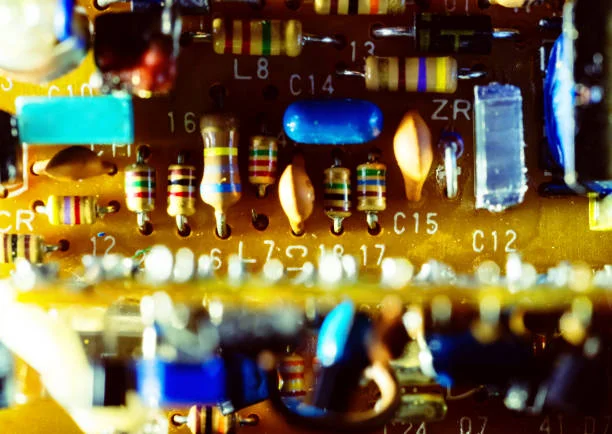
Electrolytic Capacitors
Electrolytic capacitors are the most prevalent type of polarized capacitors. Aluminum electrolytic capacitors are commonly utilized. They feature a high capacitance value and are relatively inexpensive. This makes them suitable for various applications where large amounts of charge storage are required at a lower cost, such as in power supply filtering in many electronic devices.
Tantalum electrolytic capacitors are another kind within this category. They are more compact compared to aluminum electrolytic capacitors. Their construction gives them better stability in performance. However, they come at a higher cost. Tantalum electrolytic capacitors are often chosen for applications where space is limited and more reliable performance is needed, like in some high – end portable electronics.
Supercapacitors (Ultracapacitors)
Some supercapacitors are polarized. These components have the remarkable ability to store a significant amount of energy. They are designed to handle quick energy release and recharge cycles. For instance, they play an important role in regenerative braking systems of vehicles. During braking, the supercapacitor can quickly store the energy generated, and then release it back to the system when needed, improving the overall energy efficiency of the vehicle.
It is crucial to remember that while numerous capacitors like ceramic capacitors are typically non – polarized, polarized capacitors have specific applications and must be installed with the correct polarity to ensure proper functioning and prevent damage to the capacitor and the associated circuit.
What Are Ceramic Capacitors Used For?
Ceramic capacitors have a wide range of applications. In coupling applications, they allow AC signals to pass while blocking DC, enabling the transfer of signals between different stages of an amplifier.
In decoupling, they remove noise and interference from power supplies, ensuring stable operation of integrated circuits. Filtering applications use them to select or reject specific frequencies. In bypassing, they provide a low-impedance path for high-frequency signals, improving the performance of amplifiers and other active components. Overall, their small size, wide frequency range, and stability make them indispensable in modern electronic circuits.
Conclusion
Most ceramic capacitors are non-polarized, but some specialty capacitors are non-polarized. Non-polarized capacitors can be connected to an AC or DC circuit in either direction. They are widely used in electronics. Polarized ceramic capacitors have specific uses and polarity markings. Polarized capacitors can cause problems if they are not connected correctly. Understanding polarization is key to using your circuit correctly.